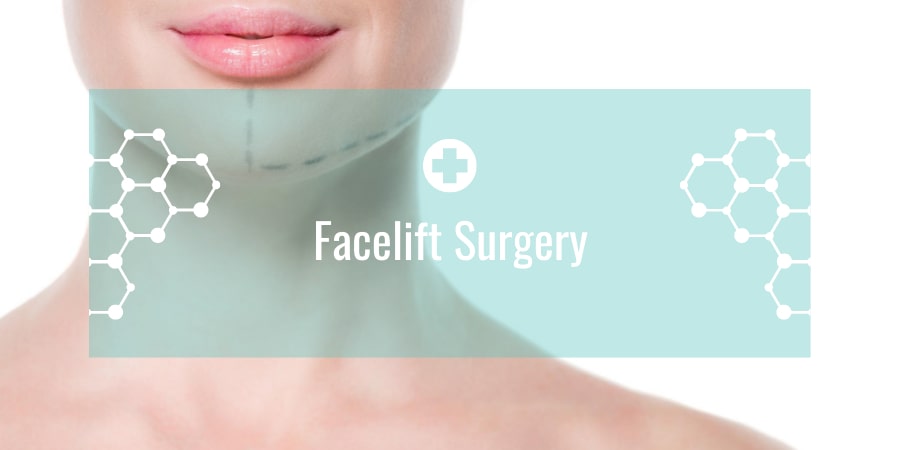Rhytidetomy or facelift surgery may be a permanent solution for you if you cannot come to terms with the visible signs of aging in your face and neck. As the name suggests, the procedure involves lifting off your facial skin and tissues underneath to create a more youthful appearance by a firmer and smoother skin tone. If you long for a total makeover, facelift surgery can be complemented with rinoplasty, brow lift, eyelid surgery or facial implants to maximize your self-confidence.
Table of Contents
What Conditions Can Rhytidectomy Tackle?
- Wrinkled, sagging skin
- Fat deposits in the face and neck
- Deep creases (between the corner of the month and nose), crow’s feet
- Folds in the skin
- Lost contour of the jaw line, jowls
- Double chin
Facelift Surgery – Procedure
Before rhytidectomy surgery, some photos are taken of your face and neck from several angles to serve as a reference point and to be able to computer-manipulate your image, while agreeing your expectations with the doctor’s suggestions.
As all cosmetic surgeries, rhytidectomy is also an outpatient procedure, conducted under general anesthesia or local anesthesia complemented with intravenous sedation. Depending on the procedure and the additional cosmetic intervention, a facelift surgery may take between 2-4 hours or sometimes more.
A facelift surgery is a highly individualized procedure the steps and the outcomes of which always depend on your expectations, skin texture and if you wish to have additional interventions during the operation such as:
- Implants
- Skin resurfacing
- Neck lift (to address jowls, double chin, fat deposits and folds on the neck)
- Suction out fat
To perform rhytidectomy, the surgeon can choose from two techniques:
- Full facelift surgery, which is the traditional technique to lift facial skin by making an incision along the hair line down along the front of your ears and finishing behind the ears.
- Limited incision rhytidectomy surgery uses a shorter incision in your hairline starting at the temples and ending at the front of your ears.
In both cases the following steps are involved in the procedure:
- Making the well-positioned incisions
- Remove and lift excess fat and skin
- Tighten loose skin and muscles underneath
- The skin is re-draped and sutured
The incisions are always made under the hairline, so no visible scars will show on your face or neck. Once closed, the incisions are covered with bandage to protect them from infection and reduce swelling. Some fluid build-up can be expected right after surgery, but it can be easily drained through a thin tube.
Rhytidectomy – Recovery
The first week after facelift surgery, you will experience considerable pain and swelling, but it can be alleviated with over-the-counter pain medication. You may also be prescribed antibiotic medication and ointment to apply on the incisions. A few days after the rhytidectomy surgery the bandage is changed to a special elastic sling that you will have to wear until your stitches are removed.
Results will become perceivable 1-2 weeks after the surgery, when the swelling and redness have gone. Your skin will be tighter, firmer and more youthful looking. You must know, however, that a facelift surgery does not change skin texture or color and does not stop the natural aging process.
Complications of Rhytidectomy
- Asymmetrical results
- Infection
- Hair loss
- Lost sensation in the face
- Tissue necrosis
- Facial nerve damage
- Bleeding
- Repeated surgery because of unsatisfactory results.
How Much Does a Face Lift Cost?
Being an elective surgery, face lift cost should always be a matter of consideration. Rhytidectomy cost may vary from facility to facility, basically set by the location and the reputation of the plastic surgeon. Bear in mind that besides the surgeon’s fees, related rhytidectomy cost also involves surgical facility expenses, anesthetics, lab tests, medications, which may add up to over $10,000.
